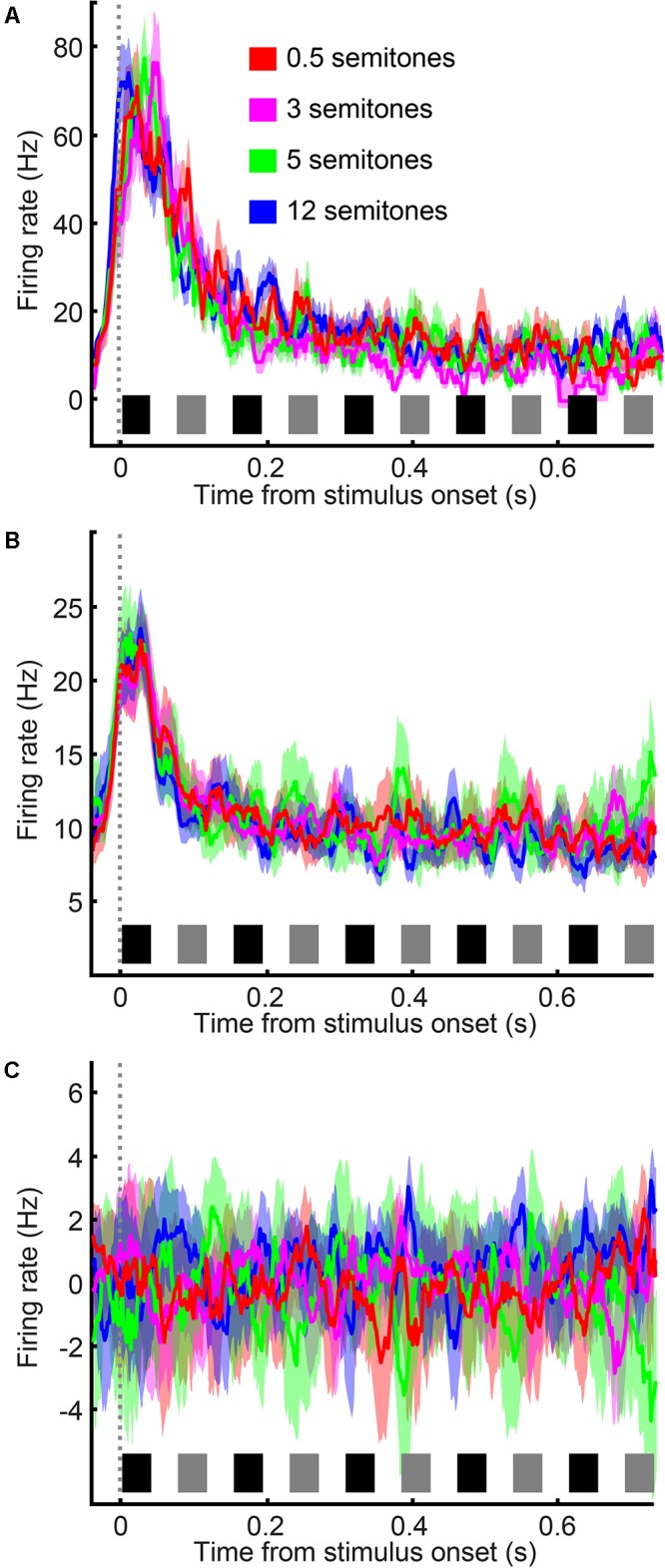FIGURE 4.

A1 neurons habituate over time in a frequency-independent manner. (A) Single-neuron example of A1 firing rate in response to the tone-burst sequence; data are combined from reports of “small” frequency difference and “large” frequency difference. Color corresponds to the frequency difference between the tone-A and tone-B sequences; see legend. Data are aligned relative to tone A1, which is first tone burst in the sequence (sliding window of 20 ms that moved in 2 ms increments). (B) Population histogram, plotted as in (A). The thick black line indicates the average response across all frequency differences. (C) Population histogram in which the mean response across all semitones was subtracted from each neuron’s response as a function of semitone separation. Thick lines indicate mean values; shading indicates s.e.m. The black and gray rectangles above the x-axis show the time course of each tone burst (tone-As and tone-Bs, respectively) in the auditory sequence.
